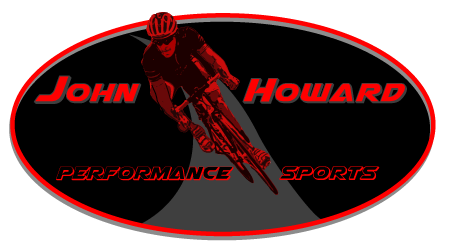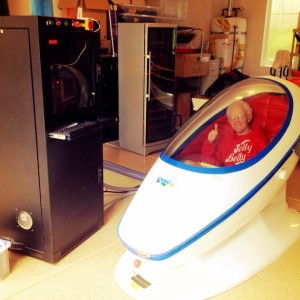Every few years I test my ever-evolving training theories on myself and on a few of my local athletes. Power, endurance, and recovery are the cornerstones of any athlete’s preparation, but the subtleties of how these basics are played out makes the difference between being competitive and just along for the ride. Results don’t just happen; they happen with cutting-edge preparation.
To hit my peak, I use altitude acclimatization with my regular schedule of on-bike, flexibility and strength training sessions. As any altitude acclimatization junkie can tell you, the benefits include increased oxygen transport from the lungs to the bloodstream, an increased ability of the blood to carry oxygen, and an increased ability to unload oxygen from the blood. Sleeping in a chamber or stuffy tent, however, holds no appeal for me, and so I turned to the CVAC pod (Cyclic Variations in Altitude Conditioning – http://www.cvacsystems.com/). The results are profound in the real world of the peleton where no prisoners are taken and egos are regularly shredded. My results, although antidotal, are backed up by independent scientific studies at both Stanford and the University of Hawaii.
He who adapts quickest generally gets to the finish line first.
The CVAC process has more to offer athletes than altitude acclimatization alone because it’s more about adaptation. CVAC sessions evoke the body’s natural adaptation response—its ability and desire to adapt to a higher level of output—which has a lot to do with raw athletic per performance.
Adaptation is the common thread linking interval, circuit, and strength training. When muscles recover after the stress of hard training, they react by adapting. Frequent adaptations refine the body as it becomes increasingly able to cope with harder efforts, more wattage, and heavier loads. A CVAC uses dynamically cycled changes in pressure, temperature, and air to provide the body with multiple chances to adapt. Inside the CVAC Pod the process employs very short-duration exposures to hypoxia (contrary to other methods that use nitrogen titration, thus providing a constant hypoxic environment). The changes in pressure represent a very important part of the CVAC process, as they set up waves of tension and relaxation. This is important to us endurance athletes who must respond to sustained bouts of tension and resolution like hill climbs, attacks, or time trials. The faster you can resolve, the faster you’re going to be.
Competitive success comes from the ability to adapt, and those who adapt the fastest will generally get to the finish line first.
If you have questions or need pointers on how to get started with CVAC, contact me.
CVAC is also incredibly time efficient. When using nitrogen titration systems you can spend well over 50 hours per week; the weekly commitment for altitude adaptation is considerably compressed by a CVAC session. To prepare for the 2013 El Tour de Tucson I did 78, 20 minute CVAC sessions over a month long period. Near the end of the month I was scaling 22, 800 feet before plummeting down to sea level in just minutes. The sessions in the pod were generally relaxing and revitalizing and often I would fall asleep. Although CVAC pods are scarce, they are finding homes outside Southern California and I encourage further investigation. visit www.cvacsystems.com/index.php/locations.


Great product and great concept. I’d like to see more of these on the East Coast.